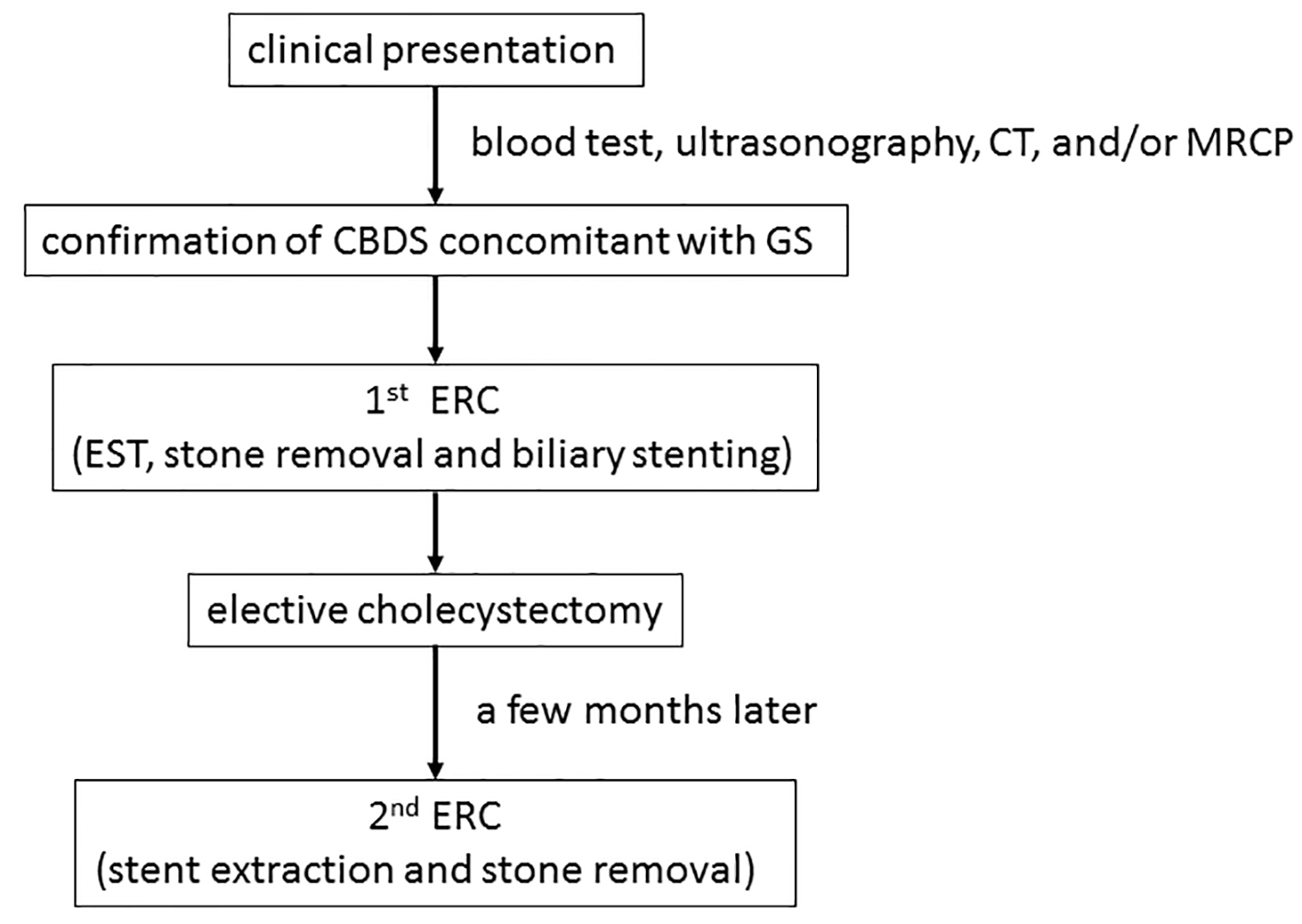| Sex, n (%) | |
| Male | 20 (51) |
| Female | 19 (49) |
| Median age (range) | 68 (40 - 89) |
| Maximal diameter of GS (mm) | |
| Median (range) | 7 (2 - 30) |
| Patients with multiple GS (≥ 5) | 21 |
| Cholangitis on admission, n (%) | |
| Yes | 15 (38) |
| No | 24 (62) |
| Maximal diameter of CBDS at first ERC (mm) |
| Median (range) | 5 (0 - 11) |
| Patients with multiple CBDS (≥5) | 6 |
| Minimal diameter of cystic duct | |
| Median (range) | 4 (1 - 8) |
| Residual CBDS at first ERC | |
| Yes | 5 (12) |
| No | 34 (88) |
| Days between first ERC and operation | |
| Median (range) | 26 (2 - 131) |
| Laparoscopic cholecystectomy, n (%) | |
| Yes | 37 (95) |
| No | 2 (5) |
| Operation time (min) | |
| Median (range) | 95 (48 - 260) |
| Days between operation and second ERC | |
| Median (range) | 41 (26 - 96) |
| Maximal diameter of CBDS at second ERC (mm) |
| Median (range) | 0 (0 - 10) |
| Patients with multiple CBDS (≥ 5) | 2 |
